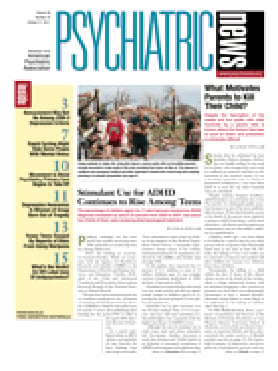Nine percent of U.S. children aged 5 to 17 were diagnosed with attention-deficit/hyperactivity disorder (ADHD) from 2007 to 2009, an increase of more than 2 percent from the number of such diagnoses reported from 1998 to 2000.
These findings are published in an August data brief from the Centers for Disease Control and Prevention's National Center for Health Statistics (NCHS).
For the research effort, Lara Akinbami, M.D., and her colleagues at NCHS's Office of Analysis and Epidemiology analyzed more than a decade's worth of ADHD-specific data collected through the National Health Interview Survey. The survey, which has been conducted annually since 1957, is based on personal household interviews with a sample of the noninstitutionalized U.S. population.
The NCHS data brief on ADHD reports prevalence trends for the disorder along gender, race/ethnicity, economic, and geographic lines.
While more boys than girls were diagnosed as having ADHD from 1998 to 2009, the rise in percentage of diagnoses made for both sexes during the study period was roughly equivalent. For boys, ADHD prevalence increased from 9.9 percent in the 1998 to 2000 period to 12.3 percent from 2007 to 2009. This compared with an increase from 3.6 percent to 5.5 percent during the same period for girls.
Variations in ADHD prevalence by race and ethnicity narrowed for most groups over the period studied, the data showed.
Non-Hispanic white children had the highest prevalence of ADHD from 1998 to 2000 at 8.2 percent, rising to 10.6 percent in the 2007 to 2009 period. Comparatively, prevalence rates for both non-Hispanic black children and children of Puerto Rican ethnicity nearly doubled from approximately 5 percent from 1998 to 2000 to 9.5 percent from 2007 to 2009. Children of Mexican ethnicity, the fourth racial/ethnic group for which data were compiled, maintained the lowest ADHD prevalence rates throughout the study period.
ADHD prevalence rates also increased over time for children from families with income less than 200 percent of the federal poverty level. Additionally, the number of reported ADHD diagnoses rose by a greater percentage for children from Midwestern and Southern states than for those living in the Northeast and the West.
The researchers noted that since the rates of ADHD prevalence in the report are based on interviews with parents, they may be somewhat skewed by factors such as faulty recall, differential access to health care between groups, or the degree of willingness to report a child's diagnosis. The researchers also acknowledged the inability to discern whether the prevalence rates highlighted in the report reflect the actual number of children affected by ADHD or simply an increase in detection and diagnosis of the disorder.

